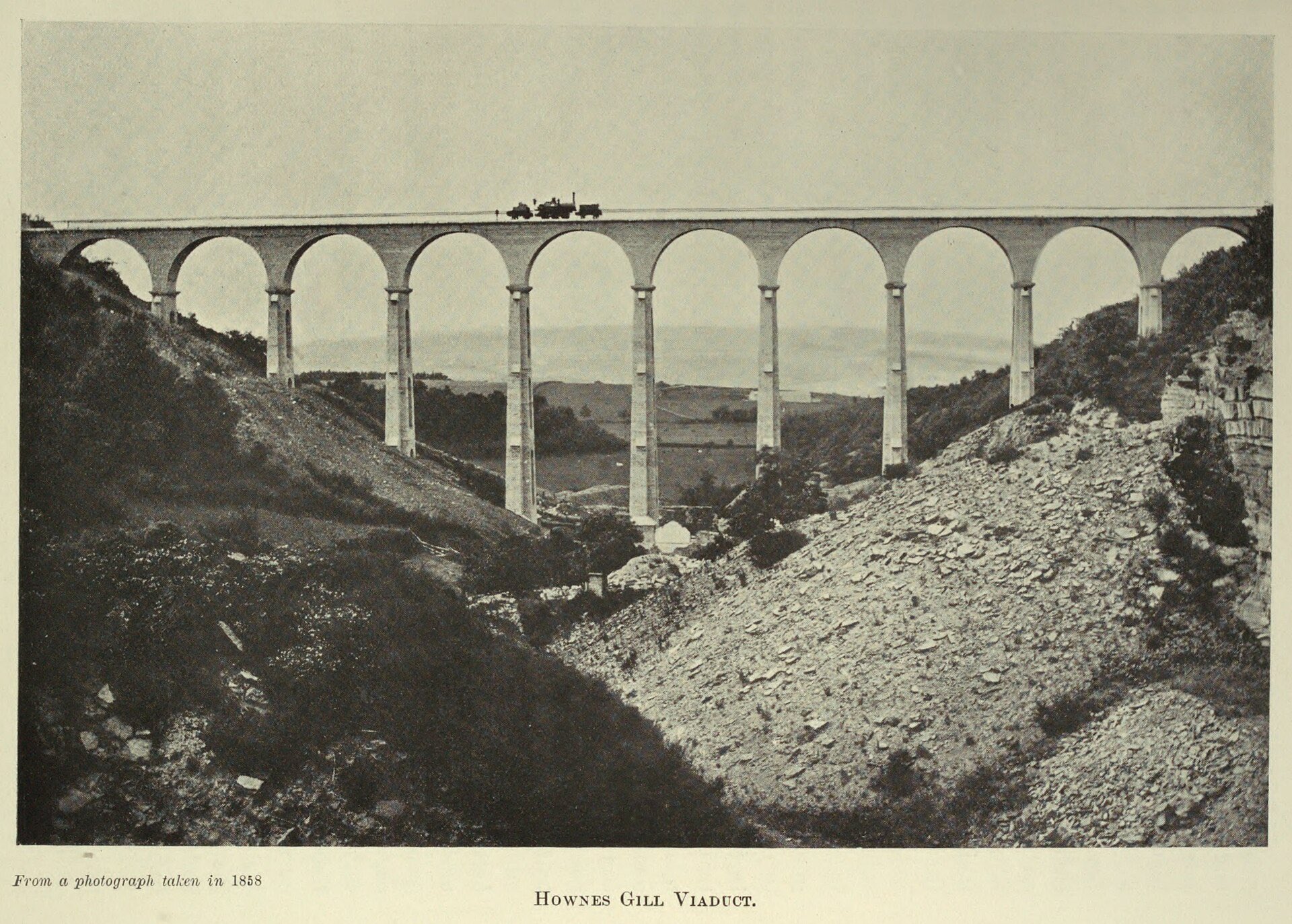
Consett
Hownsgill Viaduct
Last Updated:
22 Aug 2025
Consett
This is a
Viaduct
54.835783, -1.852202
Founded in
Current status is
Extant
Designer (if known):
Thomas Bouch

Grade II* listed
This mighty structure provided the gateway to the wilderness for over a century.
Now the viaduct came a couple of decades after the Stanhope & Tyne Railway opened. The whole concept of the line was to link the ironstone at Weardale with the coal at Durham and the staiths on the Tyne, so it was inevitable some form of crossing over the valley was required.
Unfortunately for them at this stage, it was just not viable and they barely had enough capital to get it started in the first place.
Originally, four rails led down the ravine on each side which cradled the wagons side on. A stationary engine would haul the wagons to the bottom, then all the way back up again. Just a single wagon could be moved at the time, creating a severe bottleneck on the line. It is absolutely no wonder the original company went out of business in a few years despite the innovations.
It took 20 years for a flat elevated crossing to be constructed, and that’s the one we see today. Despite the harsh terrain and gradients of the Consett to Stanhope line, it allowed through working of steam locomotives which made it far more economical and fundamentally viable.
It was actually the Stockton & Darlington Railway Co. who opened this crossing, having bought the line prior. It was constructed using Pease firebrick and local stone with a height of 175ft and 12 arches, each with a 50ft span. It only took 15 months to construct at a cost of £14,000, which is just under £1 million in modern currency. It made for one of the most spectacular railway crossings in the north.
It was designed by Thomas Bouch, a Cumbrian railway engineer also responsible for Edinburgh Waverley and the original Redheugh Bridge. His work extended to whole lines across the north and Scotland. We certainly must put this viaduct up there with his greatest feats.
The railway saw its last locomotive in the early 1980s. Sadly though, it’s gained much more notoriety as a suicide hotspot with deaths every fortnight in 2011. Fences have been erected to mitigate the risk.
Listing Description (if available)


Both these maps depict the viaduct over the valley from the mid to the late 19th century.
The first, published in 1861 but surveyed in the 1850s, illustrates the crossing very close to Hown's Quarry where the stone was sourced from. Remnants of the old cradle working can still be seen too in the legacy embankments on the north side which were presumably just filled in upon construction of the viaduct. Interestingly the valley is wholly lined with old coal pits, levels and drifts which were presumably narrow and near-exposed seams which locals used. There was an engine house at the quarry nearby which would've provided it an almost unlimited source, and consider the old engine house for the cradle working too.
There was great expansion of the railways here even in the half century. The junction leading north off the line led to Blackhill and the original Consett Station, while the line north east is the original Stanhope & Tyne. A line leads underneath which allowed travel from Consett Station to the Lanchester Valley line and Durham.

The Ordnance Survey is very much business as usual, with the crossing still operating for a good half century from this time. Hown's Farm may give us a clue into the name of this viaduct - perhaps Hown was a local figure who cultivated the lands on the north bank. Those drifts also appear to be extant.

The majesty of the Hownsgill Viaduct in July 2025

The famous photograph of the viaduct from 1858, with Hown's Quarry on the right. From The North Eastern Railway: Its Rise and Development by William Tomlinson, 1915

Photograph of the viaduct in the late 19th or early 20th century given the carriages. Unknown original source.
